Sometimes, when testing a seakayak, you hope that the weather will be challenging during a planned test-session. A wish like that is not always fulfilled: that was clear again today because it was magnificent weather for kayaking around Noorderhaaks.
Why I like challenging weather? Well I want to test a kayak in the realistic conditions which a kayakker can or will have to paddle in. For those conditions I would like to be able to give a reliable description of the performance of the kayak. A test is about these edges in paddling-world. In nice weather every kayak can do the job; but only in challenging weather it becomes clear what is good or bad.
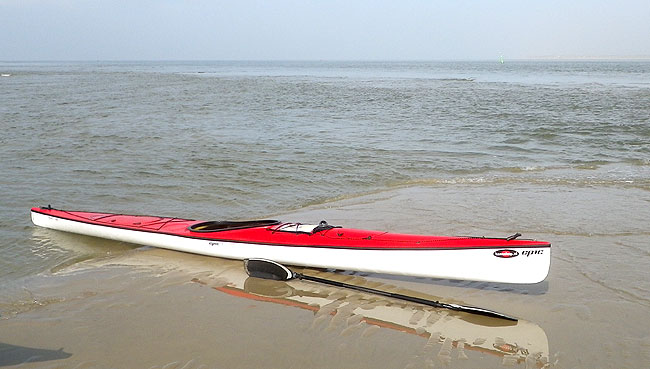
However, today the wind was only 2 bft from SW. Sunny weather with a bit hazy horizon.
On our first crossing there were almost no waves to be seen. So there is nothing I can add to earlier comments on performance.
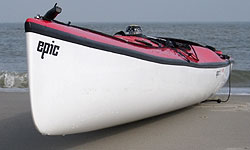
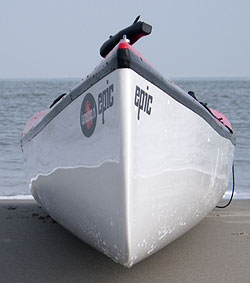
On the westside of Noorderhaaks the waves are not high, but irregular.
When I locked the rudder by retracting the fin, the 18XS turned out to be a very lively kayak; responding to every wave. The kayak weathercocks very slightly which I could easily handle with sweepstrokes.
When you unlock the rudder, the 18XS tracks like on rails. With help of the rudder it is a peace of cake to maintain the desired course.
Honestly, while using the rudder, this kayak paddles more pleasant than without.
In theory there is the option to lower the fin partially; using it like a variable skeg. This is not a realistic option as it is too difficult to adjust the position of the fin with the rope. Besides, the effect of the partially lowered fin is very small.
I think you should paddle the 18XS with the fin lowered maximal, using the rudder, OR with the fin retracted completely.
On the NW-side of the sandbank we spotted surfable waves. Of course we went straight ahead into them. They were not very high, but 70cm was enough for today. The 18XS surfs very well on long NON-breaking waves. When a wave starts cresting, the kayak broaches immediately and does not obey the rudder.
On the other hand: while surfing a non-cresting wave, the rudder is ideal and allows for steering during the surf.
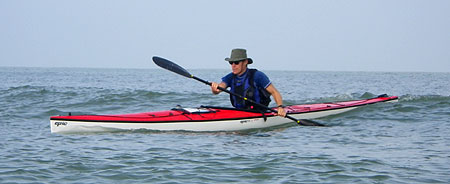
The stability with the fin retracted, seems a bit less because the stabilizing effect of the fin is gone. The primary stability is lower in this situation. But in that case you can trust on the secondary stability which is much better.
Maybe that is the reason why I would not recommend this kayak for the complete beginner. An experienced beginner with a good sense of balance could be the entrance level for this kayak.
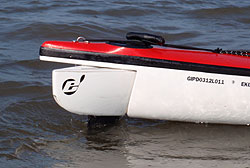
Looking at the rudder while paddling, it looks like if the rudder hardly touches the water. It is the retractable fin doing the steering! Of course the rudder will be much more submerged with a paddle weighing about 90 kg.
Looking at a surfski, like the Epic V10, it is remarkable that the rudder surface is at least double the surface of the 18XS-fin. But as these fins are not retractable it seems that both kayaks are a compromise between easy landing on a beach AND effective steering (but not being able to land on a beach).
With the fin retracted and the rudder locked the 18XS is still remarkable maneuverable: in this situation I start the crossing back to the car; paddling against the wind.
Steering is no problem but requires more attention. After some time I switch to steering with the rudder, which is much more convenient. But that is what this kayak is designed for: using a rudder.
An impression is that the kayak paddles faster without the rudder. Maybe that's logical because the rudder, flapping to each side frequently, causes a bit more drag.
As this kayak is depending on the rudder for a great deal, the maintenance becomes an important issue: the rudder-mechanism must be in good condition to prevent that the rudder breaks down during a trip. If that happens you could be in trouble.
